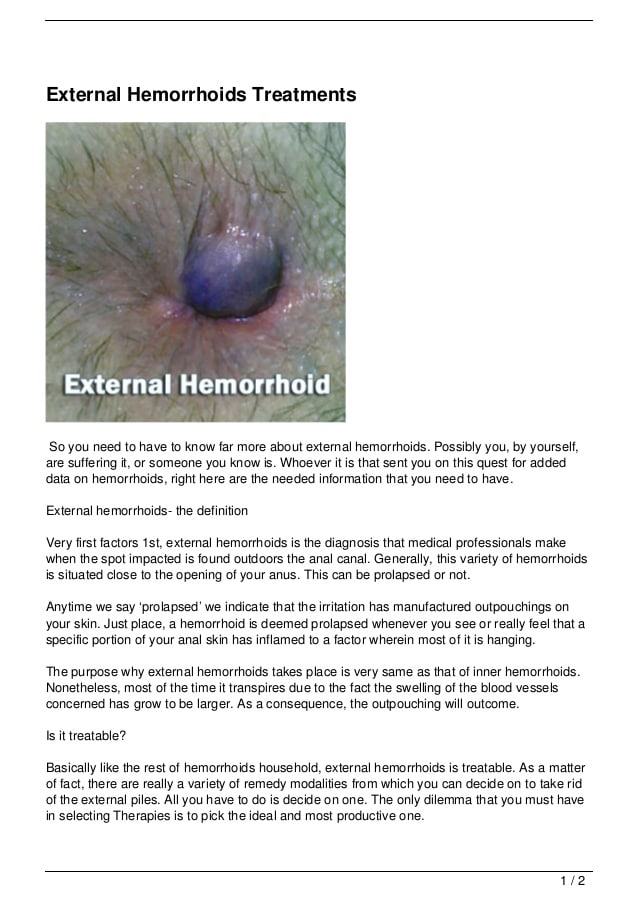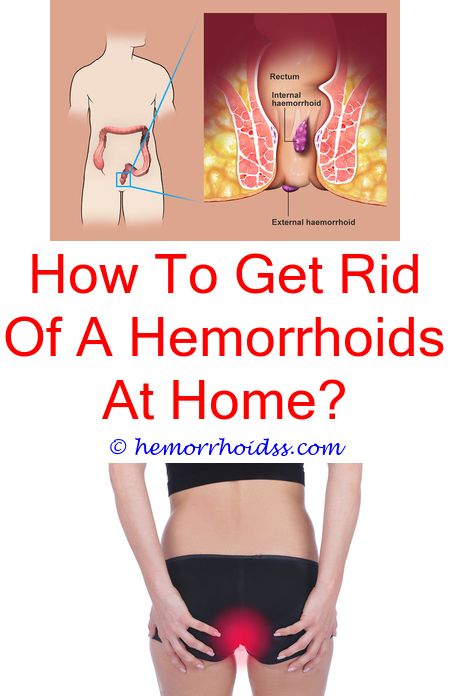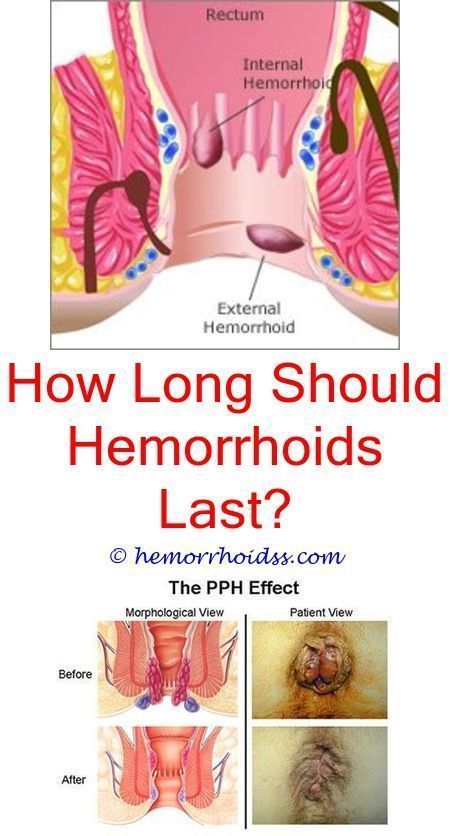What Is A Hemorrhoid
You have probably heard the term “hemorrhoids,” or “piles” as a reference to an aching anal area, but maybe you aren’t sure exactly what this common disease is. Hemorrhoids are anal protrusions, located in the anal canal and lowest part of the rectum.
These symptomatic prominences in the anal cushion contain sensitive connective tissues, venous vessels, arteries, and smooth rectal muscles. Hemorrhoids are divided into two separate categories based upon their location in the anorectal area.
External hemorrhoids lie outside the anus or directly on it. This type of hemorrhoid is visible and can be felt. External hemorrhoids are painful lumps they feel slightly rubbery and are tender and sore, especially when trying to use the bathroom or remaining in one position for too long.
People with external hemorrhoids often feel limited in their ability to move around or perform normal daily activities because of the tenderness in their rectal area. Bowel movements become much more difficult, especially when wiping afterward.
Internal hemorrhoids are the less painful of the two types of hemorrhoids. This type of hemorrhoid can neither be seen nor felt. Often, the only indication of their presence is painless rectal bleeding, where you may spot brightly colored blood on your stools or while wiping.
Straining can arise from constipation, heavy lifting, or from being overweight.
Signs Of Thrombosed Hemorrhoids
A thrombosed hemorrhoid is a hemorrhoid that has developed a blood clot inside. This can happen to both external and internal hemorrhoids. Signs and symptoms of a thrombosed hemorrhoid include:]
- Sudden onset of pain
- Constant pain following sudden onset of pain
Thrombosed hemorrhoids have the following characteristics:
- Blue or purple in color
- A lump or bulge
A thrombosed hemorrhoid will often hurt, but are not generally dangerous.
What Do External Hemorrhoids Look Like
External hemorrhoids are much easier to self-diagnose because they can be seen and felt, while internal hemorrhoids tend to be less obvious.
External hemorrhoids can be described as any of the following:
- Soft lumps that appear in bunches around the anus.
- A hard, red lump protruding from the outside of the anal area.
- Mucus-covered bumps.
- Bumps that secrete blood when wiped with toilet paper.
Many symptoms of external hemorrhoids, such as pain, can also be caused by other conditions. Therefore, it is important to see a health care practitioner for a formal diagnosis.
You May Like: Is Lidocaine Good For Hemorrhoids
Keep Your Bowels Moving
“The most important thing is to make sure you’re not constipated and having to bear down when you go to the bathroom,” Ramas says. Constipation can both lead to hemorrhoid flare-ups and make them last longer.
Drink plenty of fluids, preferably water — not alcohol and caffeine. These tend to dehydrate, which is the opposite of what you want.
“I found out that dairy was a huge culprit for me,” Adams says, “so I cut it out a little bit, and I had good results.”
Add fiber to your diet with fresh fruit, leafy green vegetables, whole grains, and bran. “It’s about fueling your body appropriately and giving yourself the nutrients that your body needs to function effectively,” Ramas says. Your doctor might also want you to take psyllium husk supplements.
Exercise can help keep you regular, too.
And when you feel the need to go, don’t wait. “You want to have a bowel movement as quickly and efficiently as possible,” she says.
Adams used a foot stool that wraps around the toilet to put her in a squatting position. “It’s like an ergonomic way to poop,” Ramas says. “If that helps some people, that’s definitely OK.”
What Happens If External Hemorrhoids Are Left Untreated

A few initial symptoms that indicate you may have external hemorrhoids include an itchy, nagging feeling around the anal area, along with swelling and pain. If left untreated, the condition could worsen and turn into a thrombosed hemorrhoid, which is a large and extremely painful bulge containing clotted blood.
Don’t Miss: Can You Get Rid Of Hemorrhoids Without Surgery
Classification Of Internal Hemorrhoids:
- Grade 1 – A hemorrhoid is present but only visualized by a doctor with ansocopy or colonoscopy. The hemorrhoid does not extend out the anus.
- Grade 2 – The hemorrhoid extends out of the anus with a bowel movement or with straining. After your BM, the hemorrhoid goes back inside on its own.
- Grade 3 – The hemorrhoid extends out of the anus with a bowel movement or with straining. You have to manually push the hemorrhoid back inside the anus. If you have this, you should seek medical attention, but it is not urgent.
- Grade 4 – A hemorrhoid extends outside the anus and are not able to be manually pushed back inside. If you have this seek medical attention immediately. There are significant potential complications.
How Are They Treated
For most external hemorrhoids, home treatment is all you need. This includes slowly adding fibre to your meals, drinking more water, and using over-the-counter ointments for a limited time to stop itching. You also may use stool softeners. The same home treatment can be used for most internal hemorrhoids.
If your internal hemorrhoids are severe, you may need other treatment. The doctor may tie off the hemorrhoids with rubber bands or scar the tissue around the hemorrhoids. These treatments reduce the blood supply to the hemorrhoids so that they shrink or go away.
Surgery to remove hemorrhoids may be done if other treatments don’t work.
Healthy habits can help you prevent hemorrhoids or keep them from getting worse. Eat foods that have lots of fibre, such as fruits, vegetables, and whole grains. Also, drink plenty of water, and get plenty of exercise.
Also Check: Can Internal Hemorrhoids Cause Back Pain
How Are External Hemorrhoids Diagnosed
Because many of the symptoms of external hemorrhoids can also be caused by other conditions, it is necessary to have an in-depth exam. Your doctor may use a series of tests to confirm the presence of external hemorrhoids near the anus. These tests may include:
- proctoscopy
- anoscopy
Your doctor may begin with a physical exam. In cases of external hemorrhoids, they may be able to see the hemorrhoids.
If your doctor suspects that you have internal hemorrhoids instead of external hemorrhoids, they may use an anoscopy to examine the inside of the anus. Internal hemorrhoids can also be seen with colonoscopy, sigmoidoscopy, or proctoscopy.
What Are The Treatments For Hemorrhoids
If at-home treatments for hemorrhoids don’t help you, you may need a medical procedure. There are several different procedures that your provider can do in the office. These procedures use different techniques to cause scar tissue to form in the hemorrhoids. This cuts off the blood supply, which usually shrinks the hemorrhoids. In severe cases, you may need surgery.
Recommended Reading: How To Treat Rectal Hemorrhoids
Signs & Symptoms Of External Hemorrhoids
External hemorrhoids are what most patients envision when they think of hemorrhoids. These occur at the anus as either visible or palpable lumps. Location is the only distinguishing factor between internal and external hemorrhoids, but it can make a significant difference. While internal hemorrhoids may go completely unnoticed, external hemorrhoids often produce a number of uncomfortable symptoms until they are resolved. Most commonly, patients report itching, burning, and pain during activity, while sitting, or during bowel movements.
What Are The Symptoms Of External Hemorrhoids
Unlike internal hemorrhoids, external hemorrhoids are located in an area with nerve endings, which can make them easier to identify but also significantly more uncomfortable. Patients with external hemorrhoids usually report experiencing acute pain or discomfort, especially during bowel movements. However, these symptoms may flare up only every so often, making it difficult to tell whether the discomfort is actually hemorrhoid-related.
Many of those with external hemorrhoids also have symptoms of internal hemorrhoids. While a licensed physician is the only one who can give you a dependable diagnosis, these are some symptoms that typically indicate an external hemorrhoid problem:
- Mild but consistent itching around the rectal area
- Pain around the anal area, ranging from mild to severe
- Swelling around the anus
You may also notice your external hemorrhoids particularly swell when bearing down during a bowel movement. Be sure to limit your time on the toilet to two minutes as additional straining can worsen your external hemorrhoids. If you find that you frequently have to strain to pass bowel movements, try to increase your fiber and water intake. Eating foods with fiber is the most beneficial way to get this carbohydrate, but you can also take fiber supplements. The recommended intake is 20 to 30 grams per day.
Recommended Reading: What To Do If You Think You Have Hemorrhoids
Diagnosing Hemorrhoids Vs Cancer
A doctor can usually diagnose hemorrhoids by conducting a simple rectal exam and taking a medical history. If they notice an unusual growth that is not a hemorrhoid, they may recommend a biopsy to test for anal cancer.
Diagnosing colon cancer is more difficult. This is because cancer markers do not necessarily correlate with the presence or absence of cancer. Therefore, the doctor may also recommend testing based on symptoms. For example, they may ask if a person has bleeding but no hemorrhoids or if hemorrhoid treatment does not relieve their symptoms.
They may perform blood work to look for cancer markers or recommend a colonoscopy to look for growths. A colonoscopy involves inserting a thin, flexible tube into the rectum while the person is asleep or sedated. If the doctor finds a growth, they may examine it in the laboratory or recommend a biopsy.
A number of lifestyle changes may improve the symptoms of hemorrhoids. For example, people can try:
- eating more fiber
How Do You Know If You Have Hemorrhoids

If you have rectal bleeding, it could be due to a hemorrhoid. But first you should see a health care professional to rule out other more serious causes, including rectal cancerespecially if bleeding is persistent. If you know for sure its hemorrhoids, there are some things you can do at home to find relief. Dr. Tom Miller asks Dr. Molly Gross what she recommends to her patients. She also talks about some procedures, including surgery, which can help with hemorrhoids.
You May Like: Can You Get Laser Hair Removal With Hemorrhoids
What Causes External Hemorrhoids
The most common cause of external hemorrhoids is repeated straining while having a bowel movement. Hemorrhoids develop when the veins of the rectum or anus become dilated or enlarged and can be either internal or external. External hemorrhoids are usually found beneath the skin that surrounds the anus.
There is a range of symptoms that can affect a person with hemorrhoids. Symptoms tend to vary depending on the severity of your hemorrhoids. Some of the symptoms that you may have include the following:
- itching around the anus or rectal area
- pain around the anus
- blood in the stool
You may notice bleeding when using the bathroom. This includes seeing blood on toilet paper or in the toilet. Lumps around the anus may feel as if they are swollen.
These symptoms may also occur because of other conditions. But if you experience these symptoms, you should schedule an exam with your doctor.
Treatment Of Internal Or External Hemorrhoids
There are many treatment options available for both internal and external hemorrhoids. The first step is to see a doctor to properly diagnose that you do in fact have hemorrhoids. There are many conditions that . Once youve received a diagnosis that you do have hemorrhoids, you can explore and compare treatment options.
Most people suffering from external hemorrhoids also have internal hemorrhoids and the treatment can be the same if your doctor is one of the 2,000 physicians across the United States trained in the CRH ORegan System. This non-surgical solution can provide almost immediate relief through rubber band ligation. Your doctor will use a single-use ligator to attach a tiny rubber band around the nerve-less base of your internal hemorrhoid, cutting off the blood supply and causing the banded tissue to shrink and fall off, usually within a few days. Though the band is placed around the internal hemorrhoid, this banding process can be used indirectly in most cases to treat most external hemorrhoids as well, and is highly effective in reducing the symptoms, discomfort and pain you may be experiencing. The CRH ORegan System is fast, painless, and in most cases, a permanent solution. .
The CRH ORegan System Can Heal Your Hemorrhoids for Good. Find a Doctor Near You that Offers the Treatment.
Recommended Reading: How Can You Treat Hemorrhoids During Pregnancy
Signs & Symptoms Of Prolapsed Hemorrhoids
Prolapsed hemorrhoids are internal hemorrhoids that have grown to the point that the protrude from the anus. These may be accompanied by classic hemorrhoid symptoms or have no symptoms at all. All internal hemorrhoids are classified on a scale of Grade 1 4:
- Grade 1 No prolapse
- Grade 2 Prolapse under pressure such as straining during a bowel movement but return on their own
- Grade 3 Prolapse that can be pushed back in by the patient
- Grade 4 Prolapse that is too painful to be pushed back in
Anal Fissures Vs Hemorrhoids: The Difference & Treatment Options
If your rear is sore and uncomfortable, I feel your pain. This problem is certainly an unpleasant one, and the sooner you can get it resolved, the better.
The question is: What’s causing the discomfort? Read on to learn about anal fissures vs. hemorrhoids to get a handle on which is giving you trouble. Then, find out what you can do to find relief.
Recommended Reading: What Are The Home Remedies For Hemorrhoids
Crh Oregan System: May Help Reduce Symptoms For External Hemorrhoids
External hemorrhoids are located in an area that contains nerve endings, which means removing them can be an extremely painful process. Because external hemorrhoids are often mistaken for internal hemorrhoids, it is important to see a doctor to receive a proper diagnosis. Nevertheless, it is very rare for someone to have external hemorrhoids without any internal disease. In most cases, many of the symptoms typically associated with external hemorrhoids actually result from internal hemorrhoids. This means treating the internal disease can relieve your symptoms.
While the CRH ORegan System does not treat external hemorrhoids, many patients will see a reduction in external hemorrhoid swelling after undergoing internal banding.
Because external hemorrhoids typically indicate an internal hemorrhoid problem, the CRH ORegan System can painlessly resolve the symptoms of individuals with external hemorrhoids in 90% of cases by banding internal hemorrhoids. This procedure has only a 1% complication rate, involving some pain and bleeding. After addressing the core internal hemorrhoid issue, external hemorrhoid symptoms normally subside.
Worsening Of Your Itching And Irritation
External hemorrhoids develop under the highly sensitive skin near your anus. With this type of hemorrhoid, you may experience itching, burning, and general irritation. By comparison, internal hemorrhoids, which develop inside your rectum underneath the sensitive tissue, dont cause physical discomfort but may cause you to have blood in your stool.
If your external hemorrhoid develops a blood clot and becomes thrombosed, you may notice a worsening of your symptoms. On a scale of 1-10, your discomfort level may jump from a 3 to a 10.
Thrombosed hemorrhoids develop quickly, and discomfort tends to worsen during the first 48 hours and then improve slightly.
You May Like: What Kind Of Dr Do You See For Hemorrhoids
Diagnosis For Hemorrhoids Vs Rectal Prolapse
If you notice symptoms like blood in your stool or constant irritation around your anus, it is a good idea to see a physician. They can evaluate you and determine whether you have hemorrhoids or a rectal prolapse.
Diagnosis for hemorrhoids
Doctors typically diagnose hemorrhoids by performing a physical exam and asking you about your symptoms. They may also request additional testing like:
- Digital rectal examination : The doctor covers their hand with a lubricated glove, then inserts their finger inside your rectum to check for issues.
- Anoscopy: The doctor inserts a hollow, lighted tube inside your anus to get a view of any internal hemorrhoids.
- Proctoscopy: The doctor places a lighted tube inside your anus to get a view of your entire rectum.
- Sigmoidoscopy: The doctor looks at part of your large intestine with a small, flexible, lighted tube that blows air into your rectum so that it swells.
- Coloscopy: This test lets the doctor see the entire length of your large intestine, which allows them to check for abnormal growths, red or swollen tissue, ulcers, or any bleeding.
Diagnosis for rectal prolapse
In addition to performing a physical exam, your doctor may request the following tests when checking for rectal prolapse:
They Get Their Baggage In Check

Many people turn to food when they’re stressed. If that’s you, learning new ways to handle your emotions is a must.
Experiment to find things that work for you. Some ideas: Get into your garden, go for a walk, torch stress with a serious workout, do yoga to chill out, or connect with a friend.
Want more ideas? Consider booking a few sessions with a counselor who has experience working with people to overcome their emotional eating.
Continued
Read Also: How To Cure Anus Hemorrhoids
How To Tell The Difference Between Hemorrhoids And Cancer
Nov 30, 2020 | Blog, Cancer, Hemorrhoids
Hemorrhoids and cancer are two entirely different conditions, yet still, one can find it hard to understand the difference between both. The symptoms require proper check-ups to tell the difference between hemorrhoids and cancer.
In this article, youll read about what hemorrhoids are and how can you know if you have hemorrhoids or something more serious. Youll be reading whether hemorrhoids cause back and stomach pain or not.